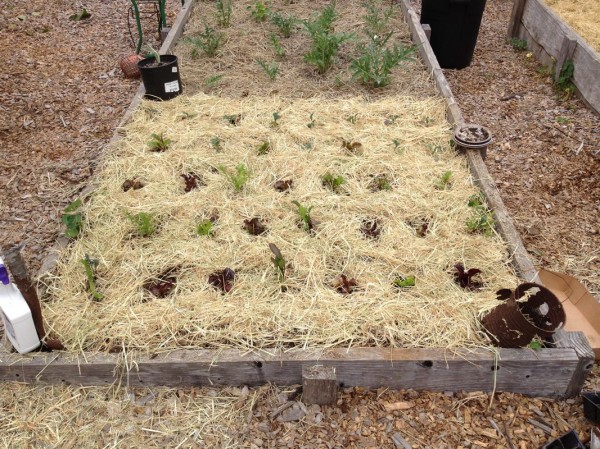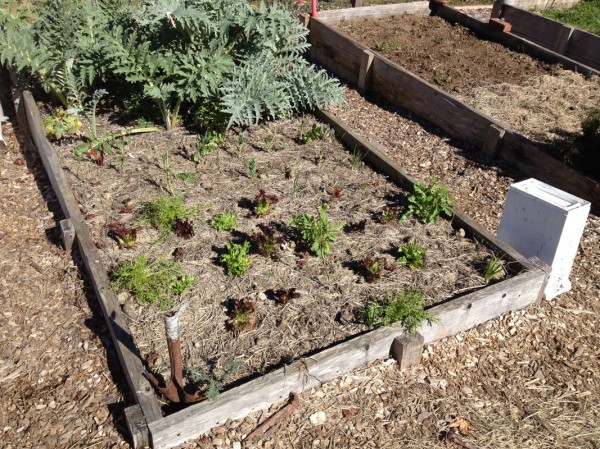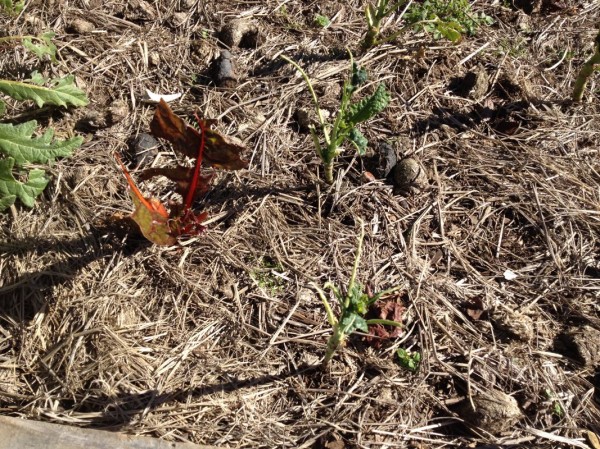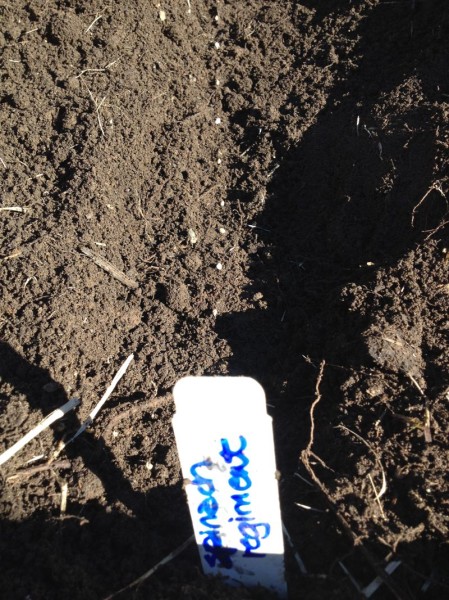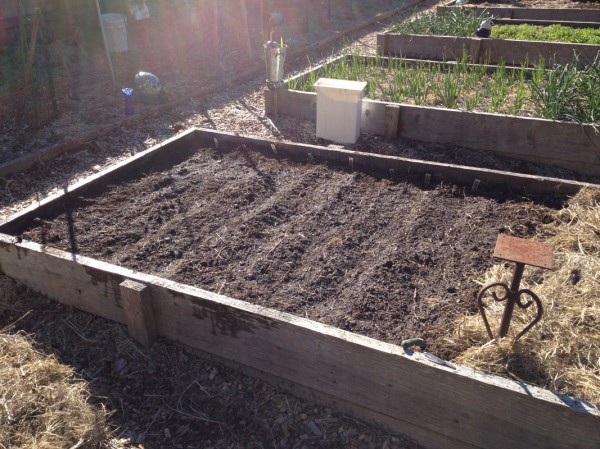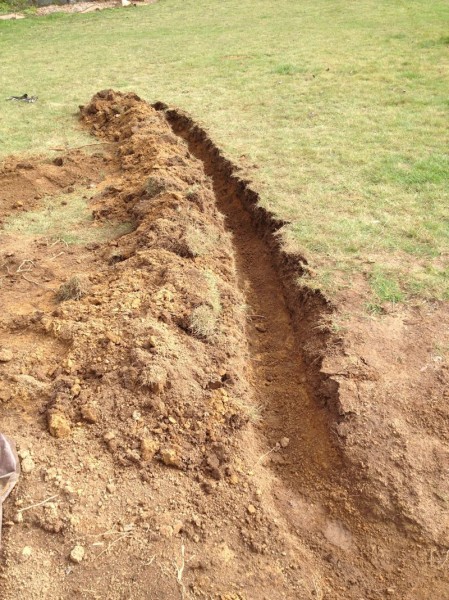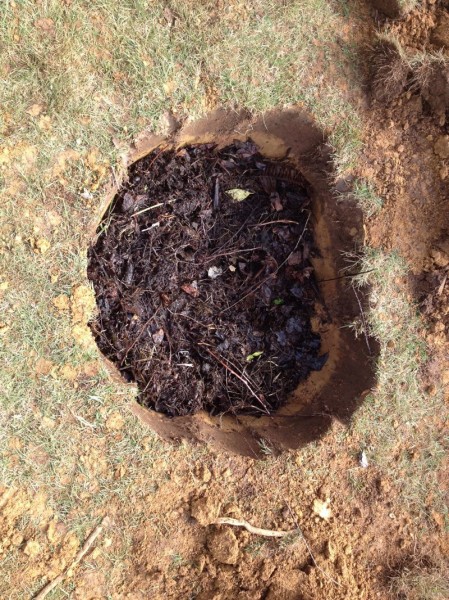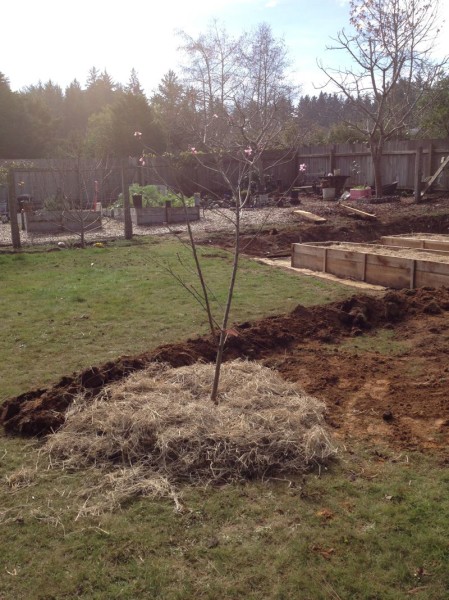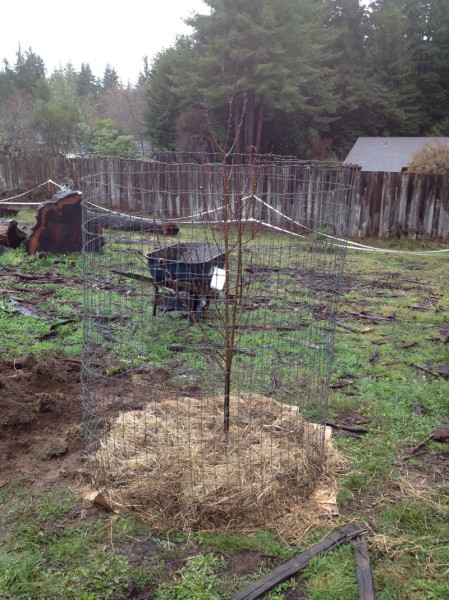Journal #13: Lessons
by Miles Raymer
These “dirt” journals are a place for me to celebrate successes and keep a record of how I learn new skills that are different from the kinds of academic skills I’ve cultivated in the past. Part of this process includes admitting defeat. And while my winter garden hasn’t been a total failure, it definitely has not turned out the way I envisioned when I first planted those little starts in October (see Journal #4). Even though I knew I didn’t really know what I was doing, I still clung to a boundless, neophytic optimism that in just a few months, my little plants would provide me with all the greens I could ever dream of. Now, as February draws to a close, I find myself collecting a paltry bag of greens every 4 or 5 days, running through mental lists of what went wrong.
As you can see, some of the plants have grown just fine, while others died or never got big enough for me to harvest much. Unfortunately, I lost the tags that identified each particular kind of plant, so I can’t do a thorough analysis of how each one fared. But generally speaking, the lettuce did pretty well, and the arugula really thrived. But the kale and chard (my favorites!) didn’t do well at all. They grew poorly from the beginning, and then were decimated by slugs (or some other hungry critter) in the last month or so.
Given that this is my first ever winter garden, I’m trying to keep an open mind so that I can consider all possible factors that contributed to unfavorable growth of my kale and chard. If you are reading this and have experience with winter gardening, I hope you will consider my thoughts and offer some advice, if any comes to mind. So, as far as I can guess, the main problem was that I planted the kale and chard way too late. My friend Amy, who lives just down the street, put her chard in at the end of summer (mid August), and her plants are doing really well. Additionally, Eddie Tanner’s book The Humboldt Kitchen Gardener (a great resource) suggests that early August is the latest time of year to plant both chard and kale. Lettuce, on the other hand, can go in as late as late September (and even later if planting in a greenhouse), which may account for its relative success.
It seems clear that planting the kale and chard in mid/late October was too late. They probably didn’t have time to become properly established while there was still enough sunlight. There was also that unusual week-long frost back in early December, after which I didn’t think any of my chard plants would come back. And even though a few of them did, the frost stymied their growth and made them vulnerable to the hungry bugs that eventually put them down for good. The kale weathered the frost a bit better than the chard, but still never took off after it passed. Even though I surrounded the whole garden with plenty of Sluggo, it wasn’t enough to keep the slugs away. And I only realized a couple weeks ago, when they started to look really bad, that I should probably go out in the early mornings to kill any slugs I could find. They say the gardener’s shadow is the best fertilizer, and I don’t think I adequately played my part this time around. I’ve been relatively successful at catching some of the slugs in the act, but ultimately it was too little too late. Jessie and I took a trip to visit family in Sacramento last weekend, and after a 4-day absence, I came home to find the kale and chard completely stripped. I’m curious to hear if any readers have experience with fending off slugs, and can offer some organic solutions that I might be able to use in the future.
There are a few other factors to consider. It’s possible that my soil needs to be amended, but I think that’s unlikely because the artichokes in the same bed have flourished. Another possibility is that I didn’t water the plants enough early on––we didn’t get much rain until late January. I also could have planted the starts either too close together or too far apart. But even if most of the plants had grown to their desired size, I don’t think the garden would have produced enough veggies to satisfy my quotidian desire for a green salad. Luckily, our CSA from Deepseeded Farms kept us flush with great greens. But next year, I want to plant a winter garden at least four times the size of this one (2 whole beds, with a greater variety), and put everything in at the end of summer rather than mid-fall. Hopefully, making these adjustments, along with any other tricks I learn before then, will give me a decent shot at producing all the greens we need until the following spring. In the final analysis, I’ve learned a lot from this experience. So even though it feels like a failure in many ways, failing is an important part of learning how to be a good gardener.
Luckily, early spring is here to help me get over the disappointment of my winter garden. Ma and I are tending a steadily growing collection of sprouts in the greenhouse, and last Saturday I planted our first few rows of direct seed veggies––spinach, lettuce, and kale. Direct seeding is a bit tedious, but I find that if I don’t do too much at one time, it can also be immensely relaxing.
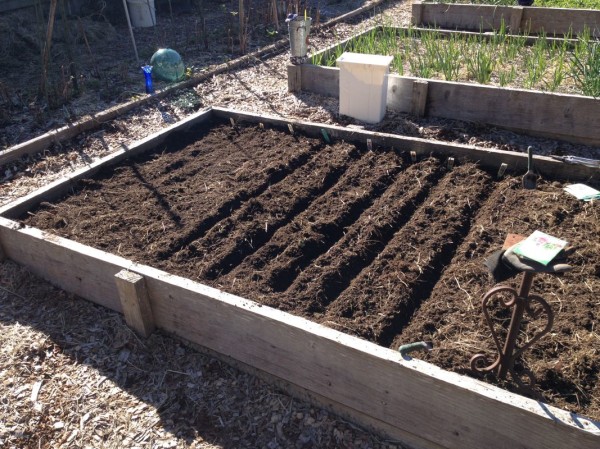
After a while, I started making individual indentations for each seed, which was preferable to planting in these furrows
I am eagerly anticipating the arrival of these new seedlings! They’ve helped show me one of the great aspects of gardening, which is that even when certain projects don’t go well, there is always new life to look forward to.
Equally important is the preservation and enrichment of existing life. My main project this week was to move an old peach tree of ours to a new spot where it will get more sun, and also to plant a new peach tree so they can cross-fertilize.
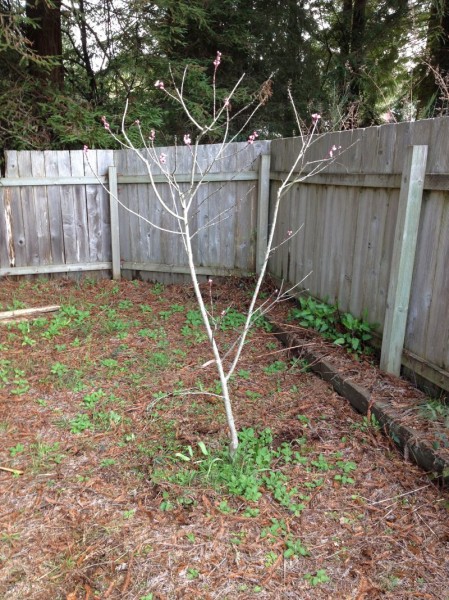
This peach tree’s original planting site is unsuitable, mostly because it is shaded by big redwoods and firs
I was enchanted by this tree’s beautiful pink blossoms, which arrived just about a week ago, so I wanted to give it the best chance possible to convert some of those blossoms into tasty fruit. The spot I chose was just east of the new garden space––the perfect opportunity to convert my recent puddling problem into an irrigation solution. I re-dug my existing drainage trench (see Journal #12) and turned it into a swale that will now direct the runoff from the garden puddle and sink it into the lawn. Once the swale was finished, I chose a plot for the peach just north of the berm (downhill side). During heavy rain, puddle water will collect in the swale and sink into the soil close to the tree, providing labor-free irrigation. I learned about this method of water management at OAEC, and am delighted to finally have a good opportunity to put it to use.
The soil beneath my lawn contains a lot of clay and is probably acidic due to nearby redwoods, so I provided the tree with fresh nutrients to help it adjust to the new location.
After transplanting, I also put horse manure and cardboard around the base to provide extra nutrients and suppress weeds. Finally, I added a thick layer of rice straw for extra mulching power and water retention. Even though this tree hasn’t done well in the past, I’m hoping that the improved sun conditions and provided nutrients will help it bounce back from years of neglect. It is immensely satisfying to turn more of our lawnspace into a home for edible plants. I definitely want to continue slowly converting our lawn into something far more useful and nutritionally edifying.
The final step in helping this tree get back on its feet was to purchase and plant another peach tree to cross-pollinate it. This was Chris’ advice (our friend and local orchardist) when Ma asked him why the tree had never fruited. Using our friend Sean’s handy guide to orchard planting on the Humboldt Coast, we opted for a frost peach, which does well in cold climates. I originally wanted to put the two trees side by side to make double use of the new swale, but there just isn’t enough room for them both to grow properly. Additionally, planting the frost peach west of the transplanted one would shade some of our new raised beds after a few years of growth. After some deliberation, Ma and I decided that we would plant the frost peach outside the fence, in the area we are tentatively calling our future orchard. As this soil is also not very nutrient-rich, I used the same fertilization methods as with the transplanted peach in order to give the frost peach a good shot at flourishing. I also put some wire around it to protect it from hungry deer.
Another lesson I learned this week was from Garrett Brinton, local beekeeping guru and instructor for the practical beekeeping course offered through HSU’s extended education program. I’ve been excited to take this course ever since returning home from Japan. I’m very interested in beekeeping for many reasons, especially because of the important role that amateur beekeepers play in combating Colony Collapse Disorder. I really enjoyed Brinton’s first lesson this week––he is clearly an enthusiastic teacher with a lot of great knowledge. He exhibits the kind unabashed, geeky passion that I’ve found to be a strong sign of dependability in members of the agricultural community. So I was really disappointed when I learned that three of the most important lessons take place on dates when I already have plans to be out of town. Additionally, I didn’t know how expensive it is to buy bees, with no guarantee that purchased hives will make it through the winter. The combination of the financial drawback and the feeling that I wouldn’t be able to fully take advantage of all the course has to offer has prompted me to decide that I won’t take the class this year, but will probably do so next year. I’m not turned off to beekeeping––quite the opposite. I’m now convinced that I definitely want to learn from Brinton, but not if I have to miss three days of a course with only thirteen total classes. So, hopefully it will work out next year.
The good news is that I recently discovered that John, one of our neighbors, is a beekeeper. He currently has two hives, but has had as many as five. So I’m happy to know there is someone in our neck of the woods already housing these delightful insects, and I’ve no doubt that all the gardens within a 2-3 miles radius will be better off.
Being back in a classroom, if only for one lesson, was a curious experience. It roused memories of college, when all I had to do was show up and let my professor circumscribe the workings of the world. When I tracked my progress with a pen and paper rather than a spade and rain boots. Simpler times. Better times? I don’t know. Remembrances of my university days give off the slow heat of nostalgia, a sentiment from which my youth still shelters me. Not forever. Part of me longs to return to the terrain of victorious lines––lined paper, deadlines, scrimmage lines. But that land, lost in some moment of unworthy distraction, was replaced by something far less definite, far more infinite. So I’ll keep staring at the tangled web of nature, trying to pick out the threads.
